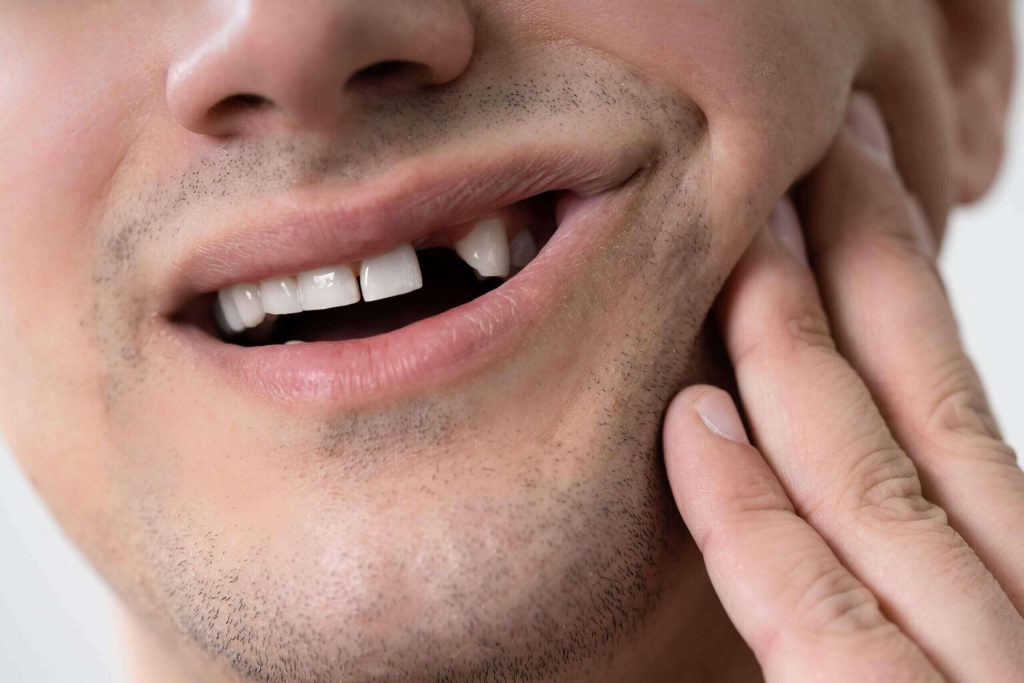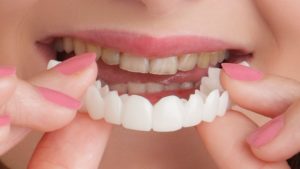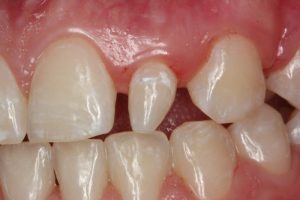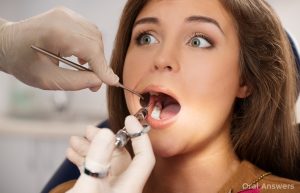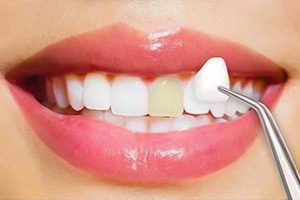I had a toothache. I went to see an emergency dentist because I don’t have a dentist of my own and this seemed urgent. I described what was going on. He told me he couldn’t see anything wrong but my description meant I’d cracked my tooth. He suggested a crown. I decided to get right on it to be done with the whole disaster.
Unfortunately, not only am I still hurting, but the tooth next to it has started turning gray. I’ve read that means it’s either dead or dying. Did my emergency dentist cause a new emergency?
Bebe M. – Virginiaf
Bebe,
I feel it’s unlikely the dentist injured or killed the tooth. Three possibilities come to mind right away. I’ll start with the least likely one. Let’s say you injured the cracked tooth and then a few days later, without realizing it, you injured the tooth right next to it. Yeah, like I said, not likely. But, it’s possible so I mention it.
Another more likely scenario is that both teeth were injured at the same time but the uncrowned tooth took a little longer than the other to show symptoms. This does happen.
As this tooth is dead or dying it will need a root canal treatment. You’ll want to deal with this quickly, though I know you’re tired of the situation. If you don’t it’s going to harbor bacteria, you’ll have a serious dental emergency on your hands.
I will suggest that you go to a different dentist to have this treatment done because of the third possibility—misdiagnosis. It could have been the graying tooth that was the problem all along.
Maybe it was referring to pain and that’s why the dentist thought the crowned tooth was the problem or maybe he just messed up. Either way, get the x-rays the first dentist did and bring them to the dentist you hire to do the root canal treatment. He or she can look at them and let you know if something was missed. If it turns out it was, you can get a refund on your first treatment.
Possible Explanations:
- Incomplete Resolution:
The persistent toothache could indicate that the cracked tooth wasn’t fully addressed by the crown procedure, necessitating a reevaluation of the treatment’s effectiveness.
- Neighboring Tooth Impact:
The grayness in the adjacent tooth raises questions about potential complications or trauma during the crown placement that may have affected its vitality.
- Underlying Issues:
The emergence of new symptoms may highlight underlying dental issues that were not initially apparent, requiring a comprehensive examination to identify and address any hidden complications.
The Path Forward: Seeking Clarity and Solutions
In the face of these unexpected developments, patients need to embark on a journey of seeking clarity. This involves scheduling a follow-up appointment with the emergency dentist, openly discussing the persistent pain and grayness, and collaborating on a comprehensive examination to uncover the root cause of these unexpected complications.
Educating Patients is Important:
Throughout this journey, patient education plays a vital role. The emergency dentist takes the time to educate the patients about the complexities involved, potential treatment options, and preventive measures to safeguard against future complications. Empowered with knowledge, the patient actively participates in decision-making, fostering a sense of control over their dental destiny.
Conclusion:
In the realm of dentistry, where each case brings its own set of challenges, this narrative serves as a lesson in persistence and collaboration. The journey from a seemingly routine toothache to unexpected complications underscores the importance of ongoing communication, comprehensive examinations, and shared decision-making in achieving optimal dental outcomes.
As the patient continues their dental odyssey, the story becomes a testament to the resilience of the human spirit and the collaborative efforts that pave the way toward lasting oral health.

